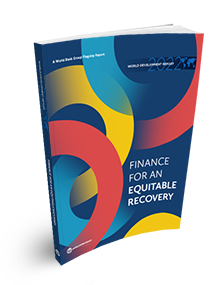The report highlights four pressing economic risks and concrete steps that policymakers can take to address them and support a robust and equitable recovery:
- Rising nonperforming loans. Increasing transparency and reducing the share of non-performing loans enables financial institutions to remain stable, well-capitalized, and able to provide credit, especially to low-income households and small businesses.
- Delayed resolution of distressed loans. Effective insolvency procedures, including out-of-court options, can reduce the social costs of widespread debt distress, prevent the misallocation of resources, and limit government interference in debt resolution. Delayed action can reduce access to credit, discourage entrepreneurship, and delay the recovery of economic activity.
- Tighter access to credit. Innovations in digital finance and lending models can help financial institutions reliably assess and manage risk and continue to provide credit, especially to low-income borrowers. Households that maintain financial access are more likely to sustain consumption, while businesses can invest and create jobs.
- Elevated levels of sovereign debt. The proactive management and reduction of sovereign debt can free up fiscal resources needed to support the recovery. Delays in addressing debt sustainability are associated with protracted recessions, rising inflation, and reduced spending on social safety nets, public health, and education, which have disproportionate impacts on the poor.












